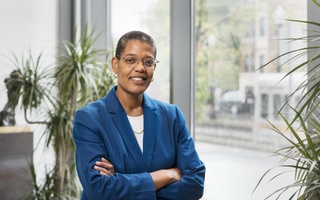
A large chunk of House Renewal's $1 billion to $1.3 billion price tag is expected to be funded by the upcoming capital campaign.
Part Two of a five-part series on Harvard's approaching capital campaign. Part One was published on April 29, Part Three on May 1, Part Four on May 2, and Part Five on May 3.
As Harvard embarks on an ambitious, multi-billion dollar fundraising campaign, students and administrators are searching for ways to distribute an unprecedented sum of donations within the College—the Harvard school that makes up nearly a third of the University’s total enrollment.
Although coordinators of the campaign have not released the specific dollar amounts of the College’s fundraising goals, several upcoming projects—including the renovation of all 12 of Harvard’s residential Houses, the expansion of financial aid initiatives, and the construction of a new student center—suggest that a sizable chunk of the campaign’s proceeds will ultimately benefit undergraduates.
“I think [the capital campaign] is definitely going to be College-focused,” former Undergraduate Council President Danny P. Bicknell ’13 said.
This past November, as one of the final initiatives in his administration, Bicknell helped launch the Capital Campaign Task Force—the main mediating body working to add a student voice to high-level negotiations over how the money will be spent.
“Students expressed frustration that they didn’t know what was going on,” he said. “We created the committee to re-engage students and help the administrators define some of these areas that we need funds for.”
THREE ‘BIG BUCKETS’
In an interview with The Crimson this February, Dean of the College Evelynn M. Hammonds said that three of the University’s main priorities in the upcoming capital campaign were “very closely tied to the College.” These three priorities, which Hammonds called “big buckets,” are support for House Renewal, financial aid, and “teaching and learning” initiatives.
Of these priorities, House Renewal has garnered the most public attention since 2011, when Dean of the Faculty of Arts and Sciences Michael D. Smith announced that Old Quincy House would be the first building to be renovated.
The Old Quincy test project is nearing completion, and improvements to Leverett’s McKinlock Hall are scheduled to begin in early June.
Administrators have predicted that the entire project will cost roughly $1 to $1.3 billion, a large part of which is expected to come from funds raised during the capital campaign.
Student members of the House Program Planning Committee, which was tasked to issue a report with recommendations for the project, said that discussions on the role of the capital campaign in securing funds for House renewal have been ongoing since 2009, when the committee released a report detailing the state of House life at Harvard.
Former Undergraduate Council President Senan Ebrahim ’12, who has served as an HPPC co-chair, said that part of the group’s task was to determine how to most effectively utilize the College’s resources during the construction period.
“House Renewal has been a priority for administrators for as long as I can remember,” Ebrahim said.
Financial aid has similarly remained a top concern for the College since 2004, when former University President Lawrence H. Summers launched a financial aid program geared towards low-income students.
Read more in College News
Administrators Seek Input from Harvard Community about Creating First Honor CodeRecommended Articles
-
Fundraising Push Could Be Delayed FurtherHarvard’s plans to launch a long-delayed capital campaign are once again in limbo, even though alumni donations have held largely
-
Capitalizing on CommunityRecent revelations that Harvard has quietly begun fundraising for a capital campaign have prompted speculation on the extent and direction ...
-
A Promising CampaignAs Harvard determines the priorities for the campaign, administrators should give students and faculty a stake in the planning, prioritizing, and fundraising.
-
Mixed SuccessOne of the primary functions of the largest fundraising effort in higher education history must be to make sure the opportunities Harvard affords are more broadly available than ever before.
-
 Harvard School of Public Health Dean Will Spend Capital Campaign Cash on Construction, Financial Aid
Harvard School of Public Health Dean Will Spend Capital Campaign Cash on Construction, Financial Aid













